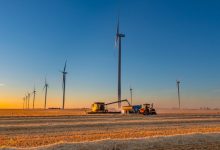The latest report from Ember Climate, a UK-based energy consultancy, outlines some fascinating facts about the pace of the energy transition, and how it has been impacted by COVID19. The report outlines several simple but vital points about how the decarbonisation of electricity around the world is progressing:
We’re doing okay – wind and solar doubled from around 5% to 10% between 2015 and 2020, in share of global electricity. That’s amazing, and it blasts away the VRE (variable renewable energy) skeptics of the 2010s.
Coal’s decline is – we know for sure – not a blip. It is a global phenomenon, including Australia, China and India. Demand reductions from COVID19 have served as a catalyst for pre-existing trends of decline, for coal.
There are a few additonal points that I think are worth extracting from this snapshot of clean energy around the world, as we’ve zoomed past the halfway point of a truly dramatic year for…well, everything. Here’s five charts that summarise these points, with a focus on Australia’s context in this global shift.
1 – Australia is doing well on clean energy growth – but not that well
Between the first half of 2019 and the first half of 2020, wind and solar saw enormous growth. But when you look at it as a percentage change, Australia isn’t particularly far up the list. As the Renewable Energy Target comes to a close, there is likely to be a noticeable slow-down, increasing over the next few years, in the growth of wind and solar. It’s troubling.
Other curiosities – Norway’s wind power growth was gargantuan, but in absolute terms, obviously pretty small (it’s a small place). Canada somehow saw a reduction in wind and solar. A few countries have their percentage values highlighted, of interest:
 2 – Australia’s coal fall was small, too
2 – Australia’s coal fall was small, too
This chart is weighted very differently. Coal is falling, and so most countries are in the negative range, here. But Australia’s drop in coal was pretty small. Bangladesh – even in absolute terms – saw a gargantuan increase, which is worrying (it was also fourth in percentage terms for renewable increase).
 3 – Countries with high renewables aren’t building more gas
3 – Countries with high renewables aren’t building more gas
This is an old bugbear of mine, but there is a persistent myth that you can’t build new renewables without building additional fossil gas power stations. It’s wrong in a stunning number of ways, and it’s reflected neatly in this dataset. Those countries with high growth in wind and solar between these two half-years didn’t also see a rise in fossil gas output. Simple.
 4 – Australia’s renewables increase from demand drops is fading
4 – Australia’s renewables increase from demand drops is fading
As Australia moved further into the year, the increase in wind and solar (and corresponding decrease in fossil fuels) is fading. This is partly seasonal – massive outages at thermal power stations over summer provide more empty space for renewables to fill. Renewables need to be growing more constantly than this, though. That is down to some key failures in government to set the right incentives. In fact, for the month of June 2020, wind power output in Australia was 300 gigawatt hours lower than the same month in 2019. That’s worrying.
5 – There is still a lot of work to do
This chart already exists in Ember Climate’s analysis, but I’ve reproduced it below with my own simple addition. The space between now – 2020 and 2030, when coal output needs to collapse to a measly six percent is huge. At the current rate of wind and solar growth and coal collapse, we’d badly miss this target. We need to accelerate both the growth of renewables and the demise of coal, and we need to to do this in the grip of a once-in-a-century pandemic. It’s no small task, and I am simultaneously energised and terrified.












